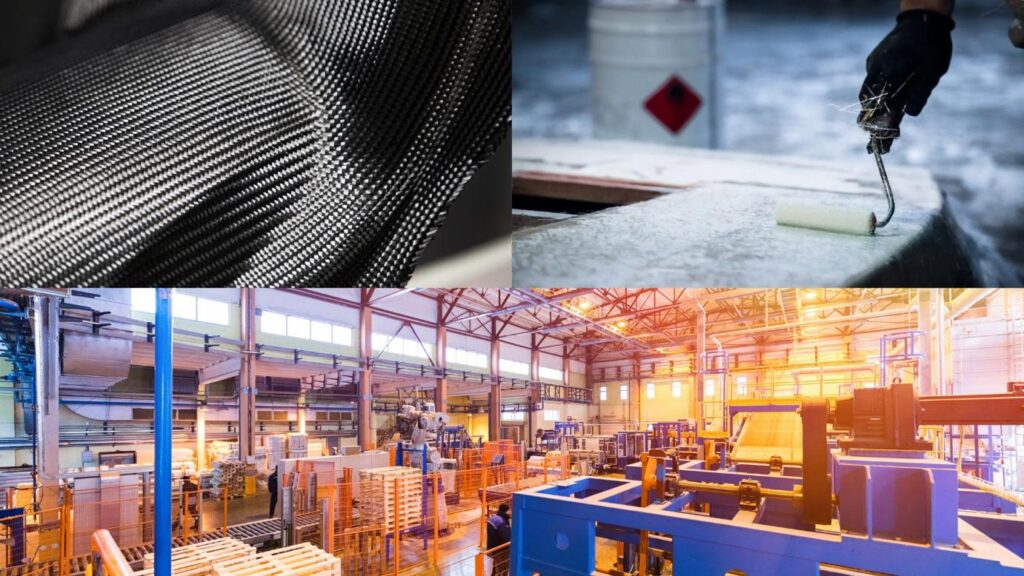
Composite Materials: Accelerating the Green Revolution in Transport
In recent years, the world has witnessed a growing urgency to adopt sustainable practices in all sectors, including transportation. The need for greener alternatives has led to significant advancements in technology, particularly in the development of composite materials. These materials, known for their exceptional strength, lightweight nature, and durability, have emerged as a game-changer in the quest for greener transport solutions. In this article, we will explore how composite materials are revolutionizing the transportation industry, enabling the creation of more environmentally friendly vehicles.
1. Lightweight and Fuel Efficiency
One of the primary advantages of composite materials in green transport is their remarkable lightweight nature. Traditional transportation methods heavily rely on materials like steel and aluminum, which can be heavy and energy-intensive to manufacture. Composite materials, on the other hand, offer a higher strength-to-weight ratio, allowing for significant weight reduction in vehicle components. By incorporating composites into the design of automobiles, aircraft, and ships, the overall weight can be substantially reduced. This reduction in weight translates to improved fuel efficiency, reduced carbon emissions, and decreased reliance on fossil fuels.
2. Enhanced Energy Storage
The transition to green transport involves the adoption of electric and hybrid vehicles powered by advanced energy storage systems. Composite materials play a crucial role in optimizing these energy storage systems. Batteries, a key component in electric vehicles, can benefit from composites due to their excellent thermal and electrical properties. Composite materials can help enhance battery efficiency, increase energy density, and improve overall performance. By leveraging the benefits of composites, the range and efficiency of electric vehicles can be significantly extended, making them a more viable and sustainable option for transportation.
3. Improved Structural Integrity and Safety
Safety is a paramount concern in the transport industry, and composite materials offer exceptional structural integrity. Composites have high strength and stiffness, making them ideal for constructing vehicle frames, body panels, and other structural components. They provide superior crash resistance, impact absorption, and fatigue resistance compared to traditional materials. The use of composites in transport not only improves safety but also extends the lifespan of vehicles due to their excellent resistance to corrosion and degradation.
4. Design Flexibility and Integration
Composite materials offer unparalleled design flexibility, enabling manufacturers to create innovative and aerodynamic vehicle designs. Unlike conventional materials, composites can be molded into complex shapes, allowing for sleek and efficient vehicle aesthetics. Moreover, composites can be seamlessly integrated with other materials, such as metals or plastics, to optimize performance and functionality. This versatility opens up new possibilities for lightweight and sustainable vehicle designs, ultimately contributing to a greener transport ecosystem.
5. Recyclability and Sustainability
Sustainability is a key aspect of green transport, and composite materials excel in this regard. Most composite materials can be recycled or reused, minimizing waste and reducing environmental impact. Advanced recycling techniques have been developed to recover and process composite components effectively. Additionally, the long lifespan and durability of composites contribute to the overall sustainability of vehicles. By embracing composites, the transport industry can move towards a more circular economy, reducing resource consumption and promoting a greener future.
Composite materials are driving the green revolution in the transportation industry, offering a multitude of benefits in terms of fuel efficiency, energy storage, safety, design flexibility, and sustainability. As the world strives for greener transport solutions, the widespread adoption of composite materials will play a pivotal role in shaping a more sustainable future. With continuous advancements in composite technology and manufacturing processes, we can expect even greater innovations in the development of eco-friendly vehicles. By leveraging the remarkable properties of composite materials, we can accelerate the transition towards a cleaner, greener, and more efficient transport system.








